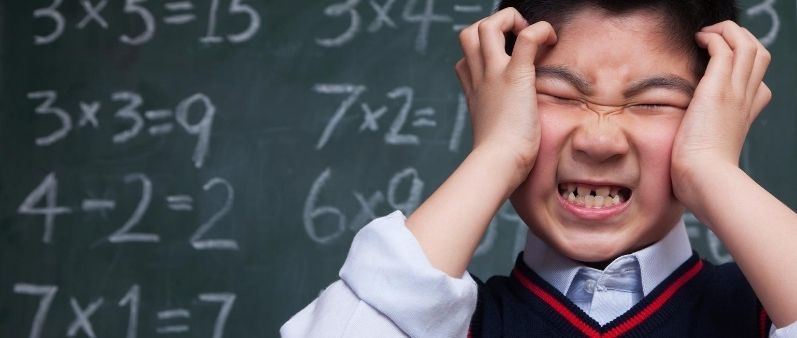
What’s The Deal With Numbers? Counting Systems in Different Languages
Four-Twenty and Nineteen Problems… But French Numbers Ain’t One!
Counting systems in different languages
Question for all the French speakers out there.
What’s the deal with numbers?
Even if you only studied a little French in high school, you’ll know exactly what we’re talking about.
Numbers in French are, for English Speakers, a Bit of a Nightmare

Things are pretty straightforward when counting. Quarante (40), cinquante (50), soixante (60)… it all follows a logical pattern. That is, until you reach 69.
Then, suddenly everything changes. 71 – which you’d expect to be septante-et-un based on how preceding numbers are formed – suddenly becomes soixante-et-onze, or ‘sixty-and-eleven’.
75, or soixante-quinze, is ‘sixty-fifteen’. 80 is not much simpler: quatre-vingts (four twenties).
And 98? Well. Let’s just say that once you’ve learned quatre-vingt-dix-huit “four-twenty-ten-eight” you don’t easily forget it!
It’s not just French, either. Learners of Welsh, Irish, Danish, and Basque will also notice that numbers in these languages don’t follow the conventional tens + units pattern that English does.
History of Counting and Numbering Systems in the World’s Languages
Like anything in linguistics, there’s a reason for this.
Peoples throughout history developed different systems for counting things. The Maya, for example, devised a robust system to count and calculate large numbers using only three characters: a line, a dot, and a shell, which represents zero.
Because different civilizations approached counting things in different ways, the principles that they used to name numbers also differ. In many cases, the modern-day language continues to reflect the former systems, even if the current counting system has adapted to fit modern conventions.
Base 10 Numbers
The basic principle behind a numbering system is a base: units are counted individually until they reach the ‘base’ number. Numbers larger than the base numeral are then expressed using multiples of the base.
The most prevalent system in use today, which English numbers are derived from, is the base 10 or decimal system. In base 10, large numbers are expressed in multiples of 10, with remainder units added on.
This is exactly what ‘-ty’ describes in the words ‘sixty’, ‘seventy’, and ‘eighty’. It’s a linguistic marker to express the multiples of 10: ‘six tens’ and ‘seven tens’, etc. The word ‘eighty-two’ is the shortened way of saying ‘eight tens and two’.
That’s all there is to it, right?
Well, not so much.
Not all languages work on the base-10 (or decimal) system.
Although today’s world is well acquainted with base 10 through widespread use in currency and the metric system, many languages spoken today pre-date the almost universal use of base-10 in maths.
These languages, such as French, still feature the remnants of ancient counting systems in modern words for numbers.
The most common alternative numbering framework is the vigesimal, or base 20 system.
Base 20 (Vigesimal) Numbers
The word ‘vigesimal’ comes from the Latin word viginiti, meaning ‘twenty’, which is also the origin of the French number vingt (20).
Base 20 numbering works in a similar way to base 10, except numbers are based in multiples of twenty. Then, the groups of 20 themselves are counted to express numbers 21 and over.
So, rather than express numbers using 1, 10, 100, 1,000, 10,000, and so on, with each category representing 10 x the previous category, vigesimal systems use 1, 20, 400, 8,000, and 160,000, etc.
In vigesimal numbering, each number from 1-20 has its own name. Numbers over 20 are communicated in a compound form using this structure:
[multiples of 20] + [remainder]
Expressed in vigesimal terms, the number for 72 would be described as “three twenties and twelve”. Here’s an example of it in use.
The Basque number for 44 is berrogeita lau.
Let’s break it down and translate it:
berr-ogei-ta-lau
[two-twenties-and-four]
Very few languages now use a fully vigesimal system. Yup’ik, a language spoken in western and southwestern Alaska, is one of the surviving vigesimal numbering systems.

Hybrid Decimal-Vigesimal Systems or ‘Systems Within Systems’
Because the decimal system is so entrenched in the world via currency and the metric system, many base-20 languages borrow elements of base-10 numbering systems to create a hybrid decimal-vigesimal system.
Basque is a perfect example of this.
Let’s take the number 256. A traditional base 20 system would express this number in terms of 20s. For a real-world example, a Yoruba speaker would say ‘thirteen-twenties minus four’.
Unlike Yoruba, Basque has ‘borrowed’ the unit of 100 from the decimal system for easily expressing hundreds, and then uses base 20 to represent numbers under 100.
So, in Basque, 256 would be:
berr-eun eta berr-ogei-ta-hama-sei
[two-hundred] and [two-twenty-and-ten-six]
[decimal] + [vigesimal] + [decimal]
French is another example of a hybrid system. Nowadays, only remnants of the French vigesimal system remain between numbers 70-99, found in constructions like quatre-vingt-quinze.
In Belgium and Switzerland, French speakers no longer use these traces of base 20, instead adopting a fully decimal system. In Liège or Geneva, it’s most common to hear nonante-sept (ninety-seven) instead of quatre-vingt-dix-sept (four-twenty-ten-seven).
At least twenty languages use hybrid decimal-vigesimal systems today, including Irish, Welsh, and Danish.
While the influence of base-20 systems is not exclusive to any one language family or geographical region, they tend to be found in clusters, due to the ancient vigesimal counting systems of ancient civilizations. Many central American languages continue to use base 20 elements today thanks to the Mayan influence.
Other Numbering Systems
Outside of base 10 and 20, there are a few other numbering systems used in languages spoken today, but these are not common.
Quinary systems (base 5) are common in modern Pacific languages, such as Drehu, a language from French Polynesia.
The Ekari language, spoken on the island of New Guinea, uses a sexagesimal (base 60) system, with base 20 and 10 also used to identify numbers below 60.
Base 60 was also used by the ancient Sumerians in the 3rd millennium BC. In fact, their sexagesimal counting system is the reason there are 60 minutes in an hour.
Spotting Numbering Systems in Action
For a fun challenge, why not investigate the numbering system used in the language you are learning?
Write out the numbers 1-20 in your target language, and also the tens 30-100. Look at the relationships between the numbers. Can you see any patterns or repetition in how the numbers are constructed?
Even if, like in French, the pattern is not universal, you may still be able to identify clues that a non-decimal system influenced the numbering at some point in history.
No Comments for "What’s The Deal With Numbers? Counting Systems in Different Languages"